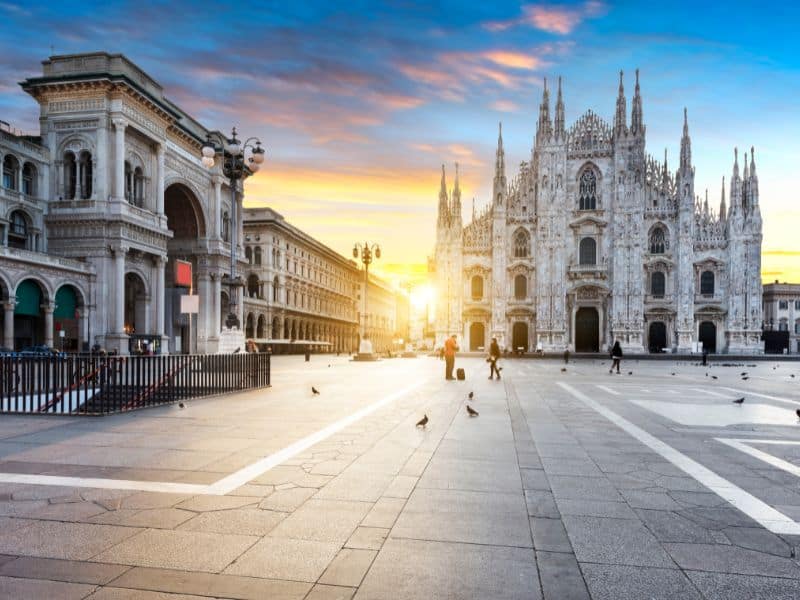Milan, the fashion and design capital of Italy, is a city that seamlessly blends history, art, and modernity. From the iconic Duomo di Milano to hidden gems like the Last Supper of San Satiro, there is such a diverse range of things to see in Milan that cater to every traveler’s interests.
Let’s embark on a journey through Milan’s cultural tapestry and discover 20 captivating places that make this city a must-visit destination.
Exploring Milan – what to see and do
There are so many things to see in Milan that is really difficult to assemble any kind of definitive list but this should give you a good start.
Best Things to See in Milan
Duomo di Milano (Milan Cathedral)
Symbol of Elegance and Faith
The Duomo di Milano, an exemplar of Gothic architecture, proudly claims the title of Italy’s largest cathedral. A testament to human perseverance and craftsmanship, its construction spanned an astonishing six centuries. Adorned with 135 spires and an impressive array of 3,400 statues, the cathedral stands as a visual masterpiece. The intricate details of its façade and the harmonious blend of architectural elements make it a captivating sight for visitors.
Beyond its exterior grandeur, the Duomo offers a unique experience on its terrace, accessible either by elevator or stairs. From this elevated vantage point, visitors are treated to panoramic views of Milan, showcasing the city’s architectural tapestry. The skyline, punctuated by iconic structures, unfolds before the eyes of those fortunate enough to ascend to this platform, providing a perspective that lingers in memory.
Stepping inside the Duomo reveals a sanctuary capable of accommodating 40,000 people. The interior, a haven of tranquility, houses an array of renowned artworks, adding cultural and historical depth to the cathedral. Among these treasures is the striking statue of Saint Bartholomew flayed by Marco d’Agrate, a poignant representation of the intersection of art and religious devotion. The Duomo di Milano, with its rich tapestry of history, architectural splendor, and cultural significance, beckons visitors to immerse themselves in an enriching journey through time within its hallowed walls.
Galleria Vittorio Emanuele II
Luxury and Legacy in an Arcade
The Galleria Vittorio Emanuele II is among the most recognizable and well-known points of attraction in Milan. Completed in 1877, this iconic shopping arcade is not merely a retail haven but a historical and cultural landmark. Named after the first king of the Kingdom of Italy, Vittorio Emanuele II, the Galleria is a captivating blend of artistry and functionality.
With its impressive glass-vaulted ceilings and ornate ironwork, the Galleria Vittorio Emanuele II provides a sophisticated setting for high-end shopping and dining. The arcade is home to a myriad of luxury boutiques, showcasing renowned Italian and international brands. As visitors traverse its marbled floors, they are enveloped in an atmosphere of opulence, surrounded by the finest in fashion, jewelry, and gastronomy.
One of the notable features of the Galleria is the stunning mosaic floor depicting the coat of arms of the Savoy family, further emphasizing its historical significance. The central octagonal space, crowned by a glass dome, serves as the beating heart of the arcade and is a popular meeting point for locals and tourists alike. As dusk falls, the Galleria comes alive with the warm glow of lights, creating a magical ambiance that enhances the overall experience. In essence, the Galleria Vittorio Emanuele II is not merely a shopping destination; it is a living testament to Milan’s rich history, offering visitors a sensory journey through time within its splendid confines.
Leonardo da Vinci’s Last Supper (Cenacolo Vinciano)
Artistry Preserved in Time
Located in the Convent of Santa Maria delle Grazie, the Last Supper by Leonardo da Vinci is a UNESCO World Heritage site. Known as Cenacolo Vinciano, Leonardo da Vinci’s Last Supper draws admirers from around the world to Milan.
This iconic mural was created between 1495 and 1498, showcasing da Vinci’s unparalleled artistic brilliance. The mural, spanning 15 feet in height and 29 feet in width, captures the climactic moment of Jesus Christ revealing the betrayal within his disciples during their last meal.
What sets the Last Supper apart is not only its immense artistic merit but also the innovative technique employed by da Vinci. He utilized a combination of tempera and oil paint on a dry wall, a method that unfortunately contributed to the mural’s gradual deterioration over the centuries. Despite the challenges of preservation, the Last Supper remains a captivating tableau, each figure rendered with meticulous attention to detail and emotion.
Visitors to the Convent of Santa Maria delle Grazie are granted a limited time to immerse themselves in the presence of this cultural gem. The mural’s composition, with Jesus at the center, creates a focal point that draws observers into the intense emotions conveyed by the disciples. The interplay of light and shadow, combined with da Vinci’s masterful use of perspective, enhances the overall impact, making the Last Supper an unforgettable and poignant experience.
In essence, this masterpiece not only serves as a testament to da Vinci’s genius but also invites contemplation on the profound themes of faith, betrayal, and humanity, making it an essential pilgrimage for art enthusiasts and spiritual seekers alike.
Sforza Castle (Castello Sforzesco)
Fortress of Art and History
Situated in Milan, the Sforza Castle, or Castello Sforzesco, has stood since the 15th century, originally commissioned by Francesco Sforza, the Duke of Milan. Its sturdy and imposing structure reflects the medieval architecture of its time. Over the years, the castle has undergone transformations and now houses various museums, including art collections and historical exhibits. Visitors can explore its interiors, discovering works by renowned artists like Michelangelo and experiencing a slice of Milan’s history.

The castle’s courtyard, surrounded by crenellated walls, provides a calm respite from the city’s bustle. Inside, notable artworks like Michelangelo’s Pietà Rondanini and pieces by Bellini and Mantegna add cultural richness to the visit. The Sforza Castle is not limited to its interiors; the adjacent Parco Sempione offers expansive greenery for visitors to unwind. The park is a popular spot for leisurely walks and a serene contrast to the castle’s historical significance. In essence, the Sforza Castle serves as a tangible link to Milan’s past, blending architectural strength with cultural depth, making it a worthwhile stop for those interested in both history and art.
Brera District
Artistic Ambiance and Charming Streets
The Brera District in Milan offers tourists a charming blend of art, culture, and local life. Known for its narrow cobblestone streets and historic architecture, Brera is a bohemian neighborhood with a distinct character. The Pinacoteca di Brera, an art gallery housed in a former monastery, is a major draw. Art enthusiasts can explore an impressive collection of Italian Renaissance masterpieces, including works by Raphael, Caravaggio, and Mantegna.
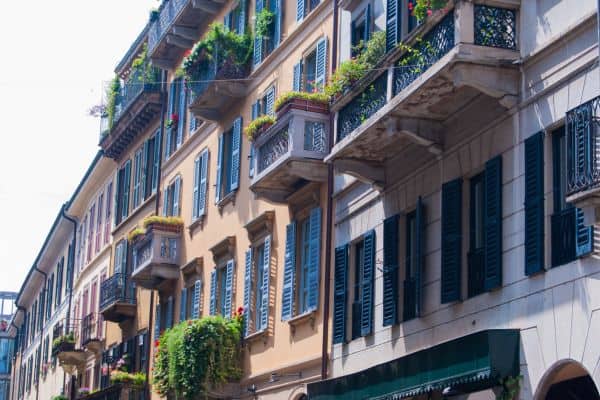
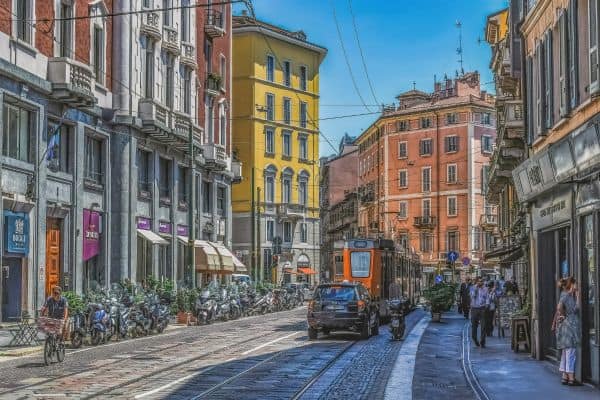
Beyond its artistic treasures, Brera is also celebrated for its vibrant atmosphere and culinary delights. The district is dotted with quaint cafes, trattorias, and local shops, providing an authentic taste of Milanese life. Visitors can leisurely wander through the streets, discovering hidden gems like the Orto Botanico di Brera, a botanical garden offering a peaceful retreat from the urban hustle. With its central location and diverse offerings, Brera stands as a must-visit destination for tourists seeking an immersive and relaxed Milanese experience.
Navigli District
Canals and Trendy Delights
Milan’s Navigli District beckons tourists with its unique charm and picturesque canals. Originally designed in the 12th century for irrigation purposes, the Navigli canals now serve as a distinctive backdrop for the vibrant neighborhood. Tourists can enjoy leisurely strolls along the canal banks, taking in the eclectic blend of modern cafes, antique shops, and art studios that line the streets. The Navigli area is particularly lively in the evenings, offering a relaxed ambiance for visitors to unwind.
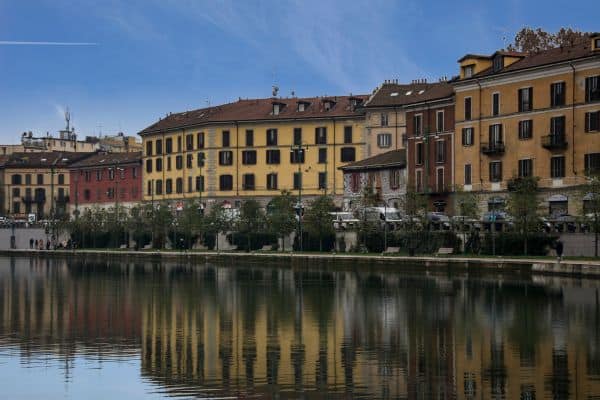
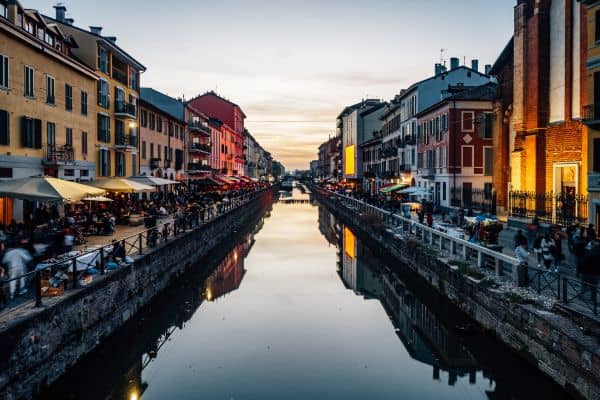
One of the notable attractions in Navigli is the Vicolo dei Lavandai, a narrow alley where traditional washhouses still stand, providing a glimpse into the historical laundry practices of the city. The district also hosts a lively antiques market on the last Sunday of every month, attracting collectors and curious tourists alike. With its diverse array of dining options, from trendy restaurants to cozy trattorias, Navigli offers a gastronomic adventure for those exploring Milan’s culinary scene. Whether one is drawn to the historical significance of the canals or the contemporary vibe of its surroundings, the Navigli District stands as a captivating destination for tourists seeking an authentic Milanese experience.
La Scala Opera House (Teatro alla Scala)
A Symphony of Opera and Ballet
La Scala Opera House, or Teatro alla Scala, holds a prominent place in the cultural landscape of Milan. Established in 1778, this historic opera house has been a cornerstone of classical music and performing arts for centuries. Located in the heart of the city, La Scala has witnessed premieres of numerous operas and ballets by renowned composers, earning a reputation as one of the world’s leading opera houses.
Tourists visiting La Scala can explore its iconic auditorium, known for its horseshoe shape and opulent decor. The theater’s museum, Museo Teatrale alla Scala, provides insights into its rich history, showcasing a collection of costumes, musical instruments, and memorabilia. While attending a performance at La Scala is a quintessential experience, guided tours are also available for those interested in the venue’s architectural details and behind-the-scenes glimpses.
The opera house stands as a testament to Milan’s commitment to the arts, attracting music enthusiasts from around the globe. Beyond its artistic significance, La Scala’s central location makes it a convenient stop for tourists exploring the city’s cultural landmarks. Whether attending a world-class performance or delving into its historical archives, a visit to La Scala Opera House offers a nuanced perspective on Milan’s enduring dedication to the performing arts.
San Siro Stadium (Stadio Giuseppe Meazza)
Football Fever Unleashed
San Siro Stadium, also recognized as Stadio Giuseppe Meazza, is a significant sporting venue in Milan, shared by football clubs AC Milan and Inter Milan. Built in 1926 and regularly renovated, the stadium accommodates over 75,000 spectators, making it one of Italy’s largest. Tourists interested in football can attend matches or explore the stadium through guided tours, gaining access to facilities, locker rooms, and even the pitch.

Situated in the accessible San Siro district, the stadium holds a distinctive charm in its architectural history. Easily reachable by public transportation, San Siro is a practical stop for football enthusiasts exploring Milan. Beyond the matches, a visit to San Siro provides tourists with an authentic immersion into the city’s football culture, offering insights into its passion and rich sporting heritage.
Civic Aquarium of Milan (Acquario Civico di Milano)
Underwater Wonders in Sempione Park
The Civic Aquarium of Milan, or Acquario Civico di Milano, is a notable attraction for tourists seeking a marine experience in the heart of the city. Established in 1906, it is one of the oldest aquariums in Europe, providing a glimpse into aquatic ecosystems through a variety of exhibits. The aquarium is home to a diverse range of marine life, including fish, reptiles, and amphibians, making it an engaging destination for visitors of all ages.
Situated in Sempione Park, the aquarium’s convenient location allows tourists to combine their visit with a stroll through the park or explore nearby attractions like the Sforza Castle. With a focus on education and conservation, the Civic Aquarium of Milan offers an informative experience, shedding light on marine biodiversity and environmental awareness. The aquarium’s commitment to sustainability is reflected in its efforts to raise awareness about aquatic ecosystems and the importance of marine conservation. Visitors can expect a calm and educational visit, gaining insights into the underwater world and appreciating the significance of preserving aquatic environments.
Sempione Park (Parco Sempione)
Tranquil Oasis in the City Center
Sempione Park, or Parco Sempione, is a tranquil urban oasis nestled in the heart of Milan, adjacent to the Sforza Castle. With its sprawling green spaces and well-maintained gardens, the park provides a serene escape for both locals and tourists alike. The park’s central location and easy accessibility make it a popular destination for those looking to unwind amidst nature without venturing far from the city center.
Visitors to Sempione Park can enjoy leisurely walks along its tree-lined paths, taking in the scenic beauty of the surroundings. The park is home to several notable landmarks, including the Arch of Peace (Arco della Pace), a neoclassical triumphal arch dating back to the 19th century. The arch serves as a picturesque entrance to the park and offers a striking backdrop for those exploring the area. Additionally, the park features a charming pond where visitors can relax by the water and enjoy a peaceful moment away from the urban hustle.
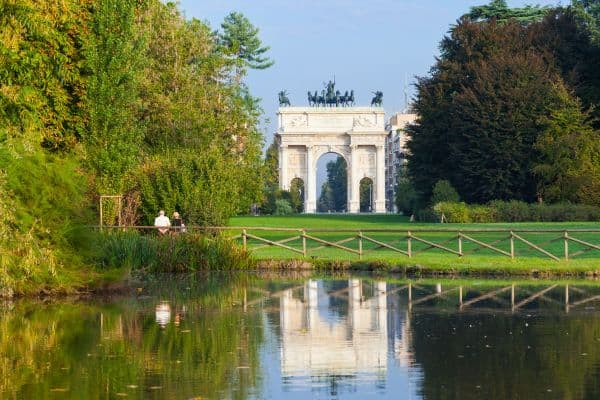
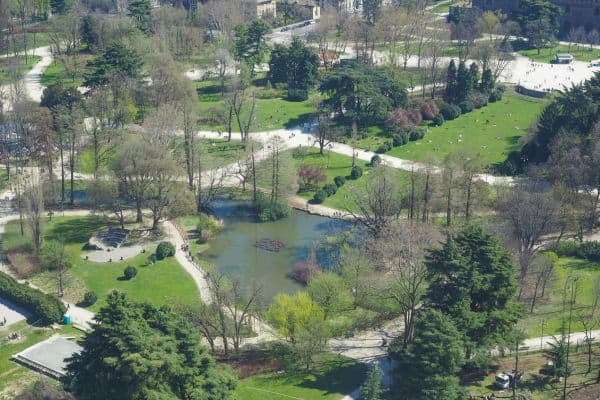
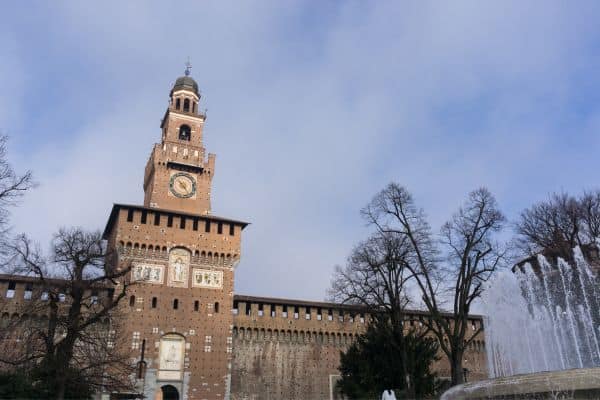
For tourists seeking a blend of nature and culture, Sempione Park provides an ideal setting. Its proximity to key attractions, such as the Sforza Castle and the Brera District, makes it a convenient stop for those looking to experience Milan’s diverse offerings. Whether enjoying a casual stroll, picnicking on the grass, or simply savoring a quiet moment, Sempione Park offers a refreshing retreat in the heart of the bustling city.
Biblioteca Ambrosiana
A Literary Haven Established in History
Biblioteca Ambrosiana in Milan, founded in 1609 by Cardinal Federico Borromeo, is a significant repository of historical manuscripts and art. Named after Saint Ambrose, the patron saint of Milan, the library boasts an extensive collection of over 12,000 manuscripts and 1,600 incunabula.
The Pinacoteca Ambrosiana, an integral part of the institution, houses an impressive art collection. Visitors can explore masterpieces by renowned artists such as Leonardo da Vinci, Caravaggio, and Raphael. The library’s serene reading room, Biblioteca Federiciana, provides a peaceful atmosphere for those seeking quiet contemplation surrounded by centuries-old books and manuscripts.
Conveniently located near the Duomo and other central attractions, Biblioteca Ambrosiana offers tourists a unique opportunity to delve into Milan’s cultural and artistic legacy, making it a must-visit destination for those with an appreciation for history and art.
Basilica di Sant’Ambrogio
Romanesque Majesty and Mosaics
Basilica di Sant’Ambrogio, located in Milan, is a historical gem with roots dating back to the 4th century. Named after the city’s patron saint, Saint Ambrose, the basilica stands as a testament to Milan’s early Christian heritage. Constructed in a Romanesque architectural style, the basilica features a simple yet imposing exterior that captivates visitors with its historical significance.
Tourists exploring Basilica di Sant’Ambrogio can admire its interior, characterized by a harmonious blend of Romanesque and Gothic elements. The basilica houses a wealth of religious artifacts, including the tomb of Saint Ambrose, adding a layer of reverence to the visit. The adjacent museum, located in the former monastery, further enriches the experience by showcasing a collection of medieval artworks, sculptures, and historical artifacts, providing insight into Milan’s cultural evolution.
The basilica’s strategic location in the historic district offers tourists a chance to delve into the city’s past while conveniently accessing other attractions. The quiet ambiance within and around the basilica allows for contemplation, making it an ideal stop for those interested in both religious history and architectural heritage. Basilica di Sant’Ambrogio stands as a quiet yet significant destination, inviting tourists to explore its rich history and appreciate its understated architectural beauty.
Museo del Novecento
Art of the 20th Century Unveiled
Museo del Novecento at Palazzo dell’Arengario in Piazza del Duomo offers a compelling exploration of 20th-century Italian art. With a strategic location near the iconic Duomo, the museum is easily accessible for tourists eager to delve into the artistic evolution of Italy during the 1900s. Boasting over 400 works, including paintings, sculptures, and multimedia installations, the museum provides a chronological journey through diverse artistic movements, from Futurism to Arte Povera.
Visitors to Museo del Novecento can navigate through the curated collection chronologically, gaining insights into the shifts and innovations within Italian art over the course of the 20th century. Noteworthy pieces by artists such as Boccioni, Fontana, and Morandi showcase the richness and diversity of the period. The museum’s commitment to educational programs and temporary exhibitions ensures a dynamic and engaging experience, making it an appealing destination for those interested in modern and contemporary art.
Museo del Novecento stands as a cultural hub with an unassuming exterior, providing tourists with a tranquil space to appreciate Italy’s 20th-century artistic legacy. Its focus on the art itself, coupled with its central location and educational offerings, makes it an accessible and enriching stop for both art enthusiasts and casual visitors exploring Milan’s city center.
Porta Nuova District
Modern Marvels and High-End Retail Therapy
The Porta Nuova District in Milan stands as a modern and dynamic area that has undergone significant urban redevelopment. Located north of the city center, it is known for its contemporary architecture, commercial spaces, and vibrant atmosphere. Developed in recent years, the district showcases a mix of residential and office buildings, as well as public spaces that contribute to its lively character.

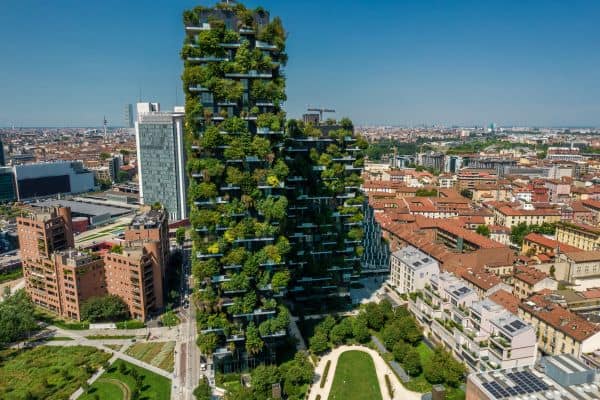
One of the notable landmarks in the Porta Nuova District is the iconic Bosco Verticale, or Vertical Forest, consisting of two residential towers covered in greenery. This sustainable architectural concept not only adds aesthetic appeal to the skyline but also promotes environmental sustainability. The district also houses the impressive Unicredit Tower, one of the tallest skyscrapers in Italy, emphasizing the modernity and business-centric nature of the area.
Tourists exploring the Porta Nuova District can enjoy a blend of shopping, dining, and cultural experiences. The Corso Como area, known for its fashionable boutiques and trendy cafes, provides a stylish ambiance for those seeking a more cosmopolitan atmosphere. Additionally, the district’s proximity to the historic Brera District and the Garibaldi Station ensures convenient access to both contemporary and traditional aspects of Milan. Whether strolling through its urban parks or engaging in the district’s vibrant commercial scene, Porta Nuova offers tourists a modern and multifaceted experience within the dynamic landscape of Milan.
San Bernardino alle Ossa
A Glimpse into Milan’s Ossuary
San Bernardino alle Ossa is a lesser-known yet historically significant church in Milan, located near the popular Basilica di Santo Stefano Maggiore. While its exterior might not boast elaborate architecture, the church is renowned for its ossuary, a small chapel adorned with human skulls and bones. The ossuary, added in the 18th century, serves as a unique and somewhat macabre attraction within the church. Visitors can explore this small chapel, witnessing the intricate arrangements of bones that create a solemn and contemplative atmosphere.
Originally built in the 13th century, the church was later reconstructed in the 18th century. Its unassuming facade belies the striking contrast within, where visitors can discover impressive frescoes adorning the interior. The church provides a quiet space for reflection, away from the bustling city center. Due to its proximity to Basilica di Santo Stefano Maggiore and the Navigli District, tourists can conveniently include San Bernardino alle Ossa in their itinerary, immersing themselves in both historical and contemporary aspects of Milan.
While San Bernardino alle Ossa may not be on every tourist’s radar, its unique ossuary and historical significance make it an intriguing stop for those interested in exploring the diverse cultural and architectural offerings of Milan. The church stands as a testament to the city’s rich history, offering visitors a distinctive and contemplative experience amidst the otherwise lively urban landscape.
Leonardo da Vinci National Museum of Science and Technology
Innovation and Inspiration Preserved
Founded in 1953, the Leonardo da Vinci National Museum of Science and Technology offers tourists a compelling exploration of the intersection between art, science, and innovation. Housed in a former monastery, the museum is dedicated to showcasing the diverse contributions of Leonardo da Vinci across various scientific disciplines. Its collection spans exhibits on physics, astronomy, communication, and more, providing visitors with insights into the historical evolution of technology.
At the heart of the museum is an impressive collection of Leonardo da Vinci’s machines and models, meticulously recreated based on his original sketches. These reproductions serve as a tangible link to the inventive spirit of the Renaissance genius.

The museum’s interactive displays and workshops enhance the learning experience, making it an engaging destination suitable for visitors of all ages. Conveniently located near the Navigli District, the museum complements a day of exploration in Milan, offering a comprehensive look into the progression of science and technology over the centuries.
Focusing on education and exploration, the Leonardo da Vinci National Museum of Science and Technology is one of the underrated things to do in Milan and it is an ideal destination for families, students, and those curious about the historical foundations of modern science. From the Codex Atlanticus, housing da Vinci’s scientific writings, to exhibits on contemporary advancements, the museum provides a thorough and informative journey through the captivating realm of innovation.
Church of San Maurizio al Monastero Maggiore
Intimate Frescoes in a Hidden Gem
The Church of San Maurizio al Monastero Maggiore in Milan, often referred to as the “Sistine Chapel of Milan,” is a hidden gem that captivates tourists with its understated beauty. Dating back to the 16th century, the church is situated near the bustling Corso Magenta and stands as a testament to the rich architectural and artistic heritage of Milan. Although it may not boast an elaborate facade, the church’s interior reveals a remarkable display of frescoes and artwork, showcasing the craftsmanship of renowned artists like Bernardino Luini.
The church, originally part of a Benedictine convent, features an unassuming entrance that belies the artistic treasures within. Visitors can marvel at the intricate frescoes that adorn the walls and ceilings, depicting scenes from the life of Saint Maurice and other religious narratives. The harmonious blend of Renaissance artistry and architectural simplicity creates a serene and contemplative atmosphere. Due to its relatively discreet location, the Church of San Maurizio al Monastero Maggiore offers tourists a tranquil retreat from the city’s bustling streets, providing an authentic experience of Milan’s historical and cultural tapestry.
Tourists exploring this lesser-known church can appreciate its proximity to notable landmarks like the Santa Maria delle Grazie, home to Leonardo da Vinci’s Last Supper. The Church of San Maurizio al Monastero Maggiore, with its rich history and artistic allure, offers a quiet yet culturally enriching stop for those interested in exploring the hidden treasures of Milan’s architectural and religious landscape.
Museum of Contemporary Art (MAC)
Contemporary Expression in Villa Reale
The Museum of Contemporary Art (MAC) in Milan stands as a dynamic cultural institution dedicated to showcasing modern artistic expressions. Located in the Sempione Park area, the museum is housed in the Padiglione d’Arte Contemporanea (PAC), a striking architectural space that dates back to the 1950s. MAC focuses on contemporary art movements, offering visitors a diverse range of exhibitions that span various mediums, including painting, sculpture, and multimedia installations.
The museum’s collection features works by both established and emerging artists, providing a snapshot of the ever-evolving landscape of contemporary art. With a commitment to fostering artistic dialogue and experimentation, MAC hosts temporary exhibitions that reflect the current trends and innovations within the art world. Its central location near the Brera District and other cultural landmarks makes it easily accessible for tourists interested in exploring Milan’s vibrant arts scene.
Visitors to the Museum of Contemporary Art can expect an immersive experience that engages with the complexities of modern artistic expression. The PAC building itself adds a unique architectural dimension to the visit, enhancing the overall ambiance. With its ever-changing exhibitions and a focus on contemporary creativity, MAC offers tourists an opportunity to engage with the latest developments in the art world while conveniently located in the heart of Milan.
The Last Supper of San Satiro (Cenacolo di San Satiro)
Optical Illusions and Artistry
Located in the Church of San Satiro, the Last Supper of San Satiro is a lesser-known masterpiece. Created by artist Donato Bramante in the late 15th century, it features an impressive trompe-l’oeil, an optical illusion that creates a sense of depth in a limited space. This unique artwork showcases the ingenuity and skill of Renaissance artists.
Orto Botanico di Brera (Brera Botanical Garden)
Tranquil Green Haven
Established in 1774, the Orto Botanico di Brera is a botanical garden within the Brera District. Home to a diverse collection of plants, trees, and flowers, the garden provides a peaceful retreat in the heart of the city. It serves as an educational and research center, promoting botanical knowledge and conservation efforts.
Milan, with its rich history and diverse cultural offerings, invites visitors to explore these attractions, each contributing to the city’s unique tapestry of art, history, and modernity. Whether indulging in the elegance of the Duomo or experiencing the contemporary vibe of Porta Nuova, each destination adds a layer to the multifaceted allure of this vibrant Italian city.
More to See and Do in Milan
Discover Milan with a walking tour or book skip-the-line tickets in advance for many of these must-see destinations.
Getting Around Milan
Getting around Milan is really quite easy. See our guide to using the highly efficient mass transit system in Milan in order to make your visit more enjoyable and more cost effective.
Explore Northern Italy from Milan
Take a day to explore some of the other amazing cities in Northern Italy! Within a short train journey from Milan, a plethora of enchanting day trip destinations awaits, each offering a unique blend of natural beauty, cultural heritage, and timeless charm. Here are seven amazing destinations that can easily be day trips from Milan by train.
Recent Posts
Here are seven great hotels in Helsinki for train travelers. All seven hotels are located near the train station in Helsinki, making them all convenient travel options that will be hard to beat...
Train Trips from Venice: Exploring Italy by Rail Italy is a country of breathtaking landscapes, rich history, and vibrant culture, and there's no better way to explore its treasures than by train....
